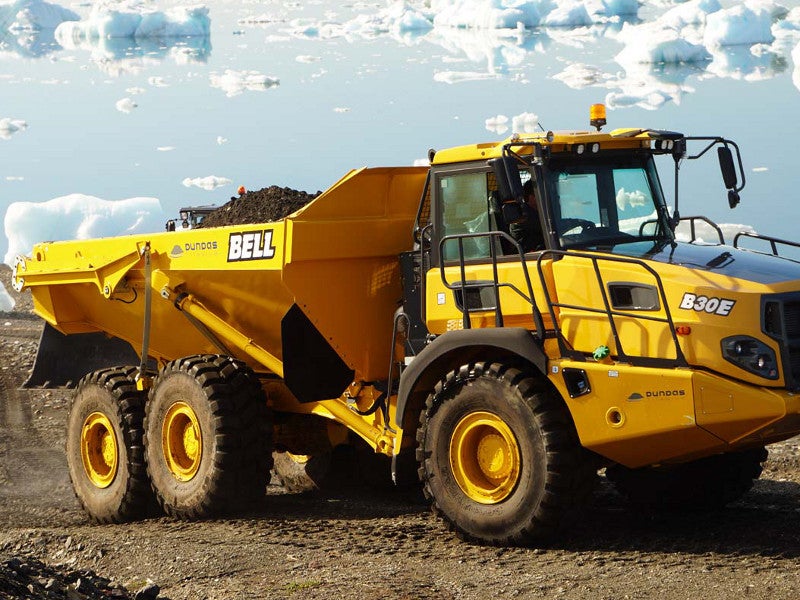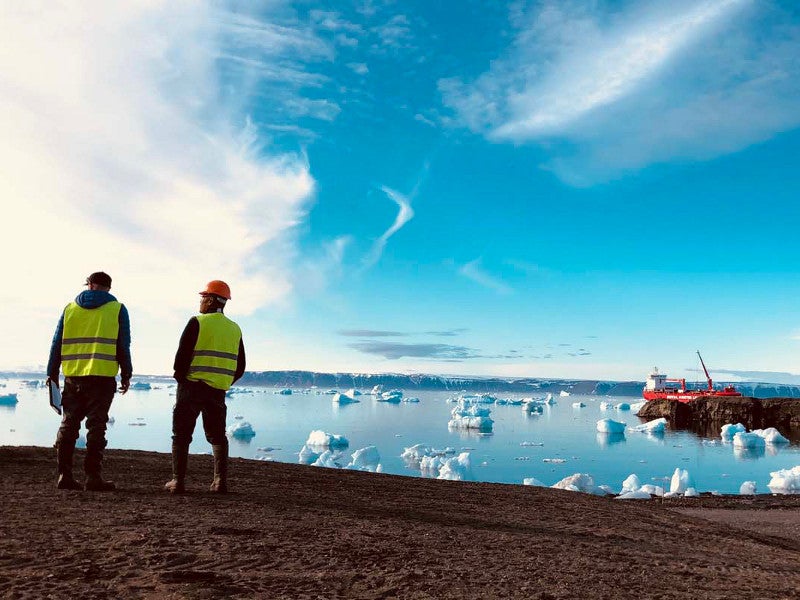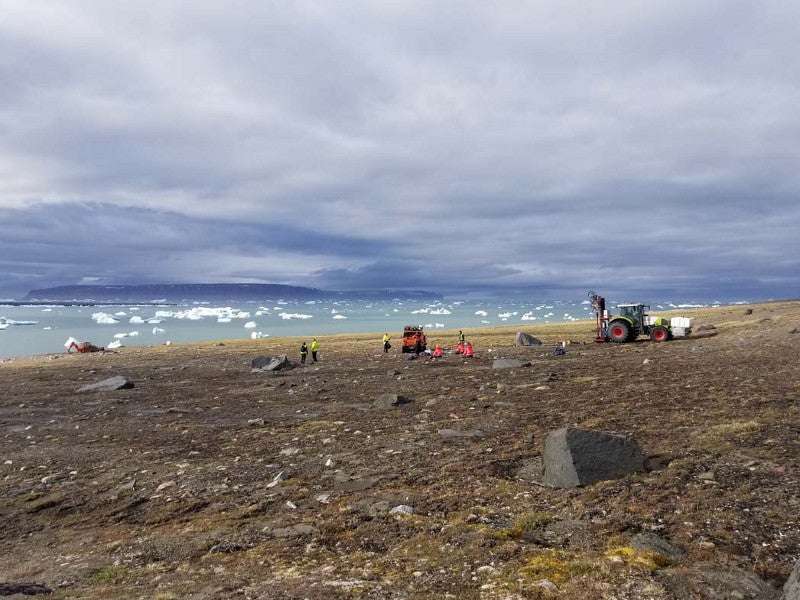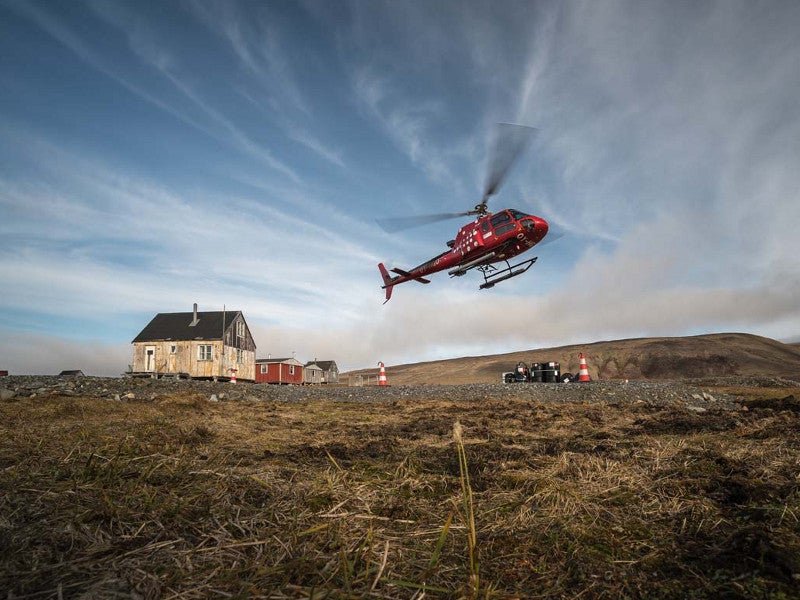Dundas titanium ilmenite project (formerly Pituffik Titanium) is being developed in the Municipality of Avannaata, Greenland. Located near the north-west coast of Greenland, the project is classified as the world’s highest-grade mineral sand ilmenite project.
Bluejay Mining (FinnAust Mining) is developing the project with an estimated capital expenditure of £196m ($245m).
The project is anticipated to produce approximately 440,000tpa of premium quality ilmenite, through its estimated life of mine (LOM) of nine years.
The Mineral Licence and Safety Authority (MLSA) approved the project in July 2017, while Bluejay completed the pre-feasibility study in January 2019.
Construction of the project is scheduled to be commenced in June 2020, while mining and processing are planned to be started in September 2021. First product shipment is anticipated to be made in October 2021.
Current works undertaken at Dundas
Bluejay Mining is currently focusing on preparing bulk smelter sample for shipment to Sorel-Tracy plant in Quebec, Canada. The plant is owned by Rio Tinto Iron and Titanium Canada (RTIT).
The plan also envisages the construction of a 2,400t per week ROM demonstration plant for processing ilmenite-bearing sand sample into a heavy mineral concentrate.
Dundas titanium ilmenite project location and geology
Dundas titanium ilmenite project site is situated near the south coast of Steensby Land in North-West Greenland, approximately 80km north of the Qaanaaq town.
The project area mainly consists of multiple beaches, separated by rock headlands, which further extend in several low lying terraces or raised beaches. Drainage patterns carrying summer melt water to the sea divide the terraces at regular intervals.
The project hosts high-grade ilmenite on the south coast of the Steensby Land peninsula within three main deposits.
The first deposit is the raised beaches, which contain more than 1km-wide ilmenite in more than 30km of coast-line. The second type of deposits is known as the active beaches, which consist of the area towards the sea of frontal dunes, including the beach, tidal zones, and surf zone.
The third type deposit is referred to as the drowned beaches, which are the areas seaward of active beaches.
Reserves
The mineral reserves at the Dundas titanium ilmenite project were estimated to be 67.1Mt grading 3.45% TiO2, as of January 2019.
The mineral resources are estimated to be 117Mt, graded at 6.1% TiO2, including the newly added Iterlak East and West mineral resources.
Mining at Dundas titanium ilmenite project
Surface mining using conventional dry mining techniques will be applied at the Dundas titanium ilmenite project. Overburden is proposed to be removed by truck/hydraulic excavators and the region will be mined by using scrapers and/or truck/excavators.
The mining activity will be primarily focused on the raised and active beaches at Moriusaq Bay area, followed by Iterlak delta that lies approximately 13km south-east of Moriusaq.
The heavy mineral sands from the deposits will be initially taken to the trash removal plant near the road hopper. The ore will be passed through a grizzly screen, scrubber unit, and trommel screen to obtain a desired size.
It will then be subject to wet gravity and dry gravity processing to produce two ilmenite products.
The dry separation processing plant will use rotary dryer and two stages of rare earth drum (RED) magnetic separators to produce a premium ilmenite product and a standard ilmenite product.
An estimated 350,000t a year of ilmenite product is expected to be produced from the project. The two ilmenite products will be exported for the manufacture of TiO₂ pigment either directly or after upgrading to titanium slag.
Ilmenite can be processed into TiO₂ pigment either by sulphate TiO₂ pigment production or the chloride TiO₂ pigment production process.
Project infrastructure
A beneficiation plant is proposed to be constructed onshore, near to the mining operations. The plant will employ gravity and magnetic recovery techniques to separate the heavy mineral concentrates from the beach sand and produce saleable heavy mineral sand.
A floating production, storage and offloading (FPSO) vessel is proposed to be constructed with a capacity to accommodate ships up to 60,000DWT (dead weight tonnes).
Contractors involved
Inuplan, an engineering and construction company based in Greenland, was contracted to assess the infrastructure development plans for the project.
Bluejay Mining prepared the project’s pre-feasibility study (PFS) with support from consultants such as Dundas Titanium, SRK, IHC Robbins, and Wood (formerly AMEC Foster Wheeler).






